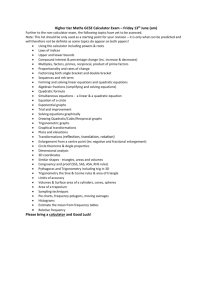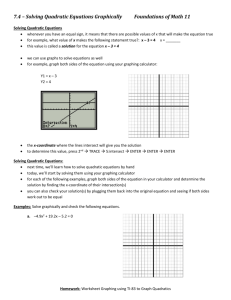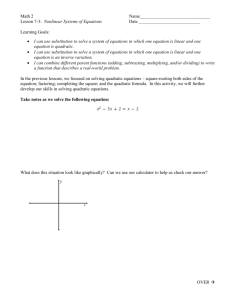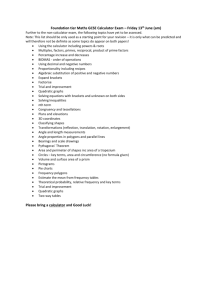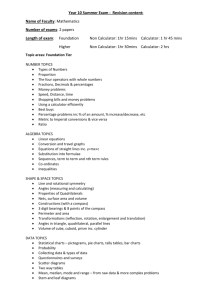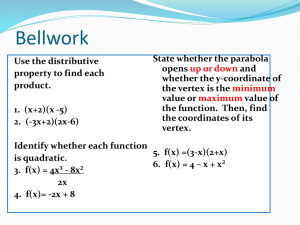Can quadratic situations arise in problems that do not have
advertisement
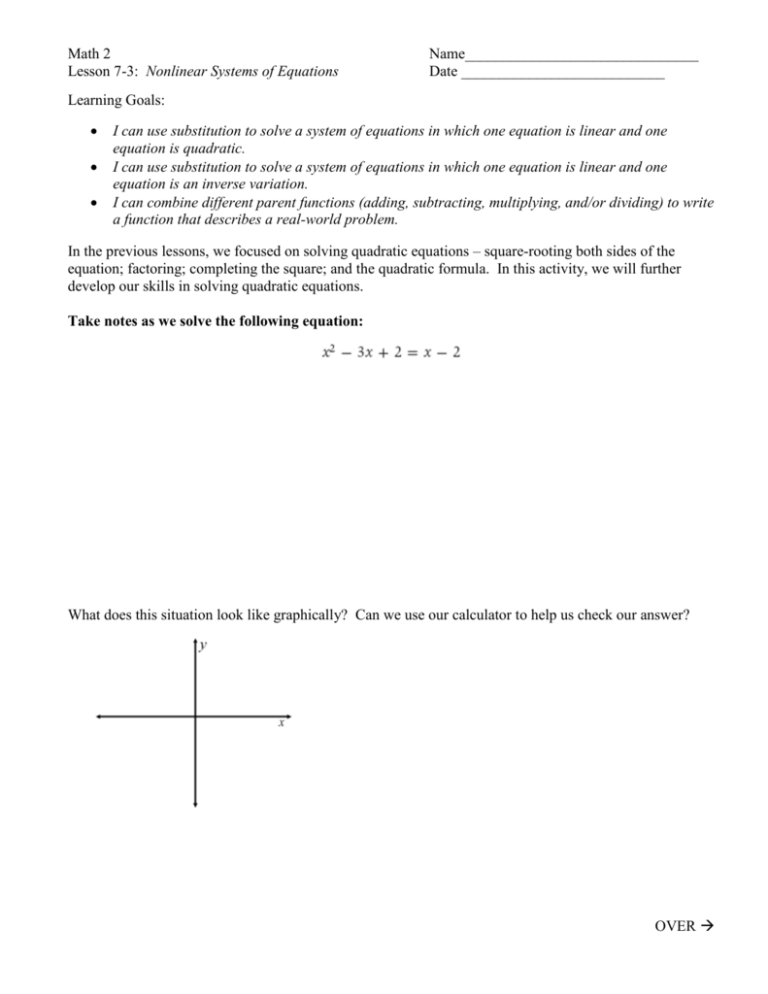
Math 2 Lesson 7-3: Nonlinear Systems of Equations Name_______________________________ Date ___________________________ Learning Goals: I can use substitution to solve a system of equations in which one equation is linear and one equation is quadratic. I can use substitution to solve a system of equations in which one equation is linear and one equation is an inverse variation. I can combine different parent functions (adding, subtracting, multiplying, and/or dividing) to write a function that describes a real-world problem. In the previous lessons, we focused on solving quadratic equations – square-rooting both sides of the equation; factoring; completing the square; and the quadratic formula. In this activity, we will further develop our skills in solving quadratic equations. Take notes as we solve the following equation: What does this situation look like graphically? Can we use our calculator to help us check our answer? OVER Page 2 1. Now you try. Solve the following equation BY HAND. When you are finished, enter your smallest solution into your calculator. Also sketch a graph to illustrate your answer. x 2 4 x 5 2 x 10 2. When you finish the above problem quickly, try solving below more challenging problem BY HAND. Check your solution by graphically using your calculator. When we have a quadratic equation set equal to a linear equation, how many solutions are possible? Sketch examples of what each type would look like graphically. Also describe what each type will look like algebraically. Page 3 Can quadratic situations arise in problems that do not have quadratic equations originally? Take notes as we solve the following equations. 3. Now you try. Solve the following equation BY HAND. Illustrate your solution with a sketch of the graph. When you are finished, enter your smallest answer into your calculator, then move on to the next problem. OVER Page 4 4. Solve the following equation for x: When we have an inverse variation set equal to a linear equation, how many solutions are possible? Sketch examples of what each type would look like graphically. Also describe what each type will look like algebraically. 5. Practice the below problems. They are mixed between the two types of problems practiced above. Solve the equations BY HAND, then check your answer on your calculator. a. b. c. d.
